#top magazine in Kenya
Text
Julia Michaels: The Pop Star Who Crafts Vulnerability
Julia Michaels: The Pop Star Who Crafts Vulnerability
Album: Essentials,
Genre: Pop
Julia Michaels is not just any pop star; she’s the pop star who has mastered the art of songwriting and collaboration, with a unique talent for tapping into the vulnerability of artists and herself. Born in Iowa, this musical prodigy has been shaping both playful and poignant hits for fellow musicians since her…
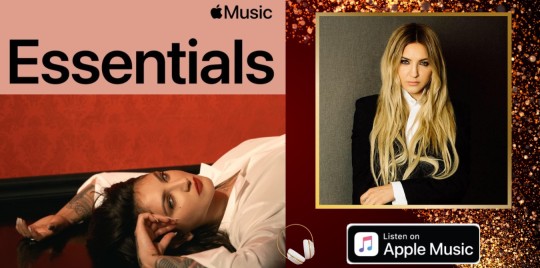
View On WordPress
#" Inner Monologue#"Issues#album#All-in-One#Apple#apple iphone#apple itunes#apple music#apple store#Artistic Growth#available in Kenya#Best Artist 2020#chart-topping hits#collaborations#emotional connection#global#H&S Magazine&039;s Best Artist Of The Week#Heartfelt Performances.#Iowa#itunes#itunes store#Julia Michaels#Kanye West#Kenya#Minimalist Music#music amplifier#music video#musical evolution#musical journey#Nairobi
2 notes
·
View notes
Photo

The Top 5 Longreads of the Week
Today we are featuring stories about the decimation of a national park, the survival of Texas Monthly magazine, how a couple escaped slavery in Boston, choosing when to die, and the future of jelly. 1. In a Famed Kenyan Game Park, the Animals Are Giving Up Georgina Gustin | Undark | January 4, 2023 | […]
https://longreads.com/2023/01/20/the-top-5-longreads-of-the-week-449/
#Top 5#Amboseli National Park#Bettina Makalintal#Boston#Dignitas#Eater#Georgina Gustin#Ilyon Woo#jelly#Kenya#Robin Williamson#Stephen Harrigan#Texas Montly#The Audacity#The Boston Globe Magazine#Undark#Longreads
0 notes
Text
Donald Glover claims Tina Fey told him that he was only hired as a writer on “30 Rock” thanks to NBC’s diversity initiative.
The comedian, also known by his rapper moniker Childish Gambino, landed his first breakthrough writing job on the hit sitcom in 2006 when he was 23 years old.
While he brought his own ideas to the table, Glover says the network introduced a diversity incentive at the time that allowed shows to hire black writers without it reflecting the budget.
“It was a diversity thing,” Glover told GQ in April’s cover story. “There is no animosity between us or anything like that, but [Tina Fey] said it herself.”
“The last two people who were fighting for the job were me and Kenya Barris. I didn’t know it was between me and him until later,” he added.
He told the magazine that the “Black-ish” creator said he “hated” Glover “for years.”
Glover wrote for the Emmy Award-winning show for three years.
“It definitely didn’t feel like I was supposed to be there,” the “This is America” singer said.
“I used to have stress dreams every night where I was doing cartwheels on the top of a New York skyscraper with the other writers watching me.”
The Post has reached out to Fey’s reps for comment.
The “Redbone” hitmaker previously opened up about his experience of working on the hit sitcom.
In a 2018 New Yorker profile, the entertainer said he began to wonder if he was “being hired just because I’m black.”
According to the outlet, Fey confirmed that “the answer was in large part yes; she admired Glover’s talent but hired him because funds from NBC’s Diversity Initiative ‘made him free.'”
“30 Rock” ran from Oct. 11, 2006, until its final episode on Jan. 31, 2013.
The hit NBC show centered around Fey’s character Liz Lemon, who is the head writer for a popular TV show, likened to Saturday Night Live.
28 notes
·
View notes
Photo

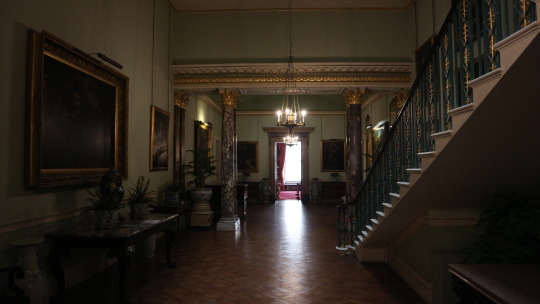

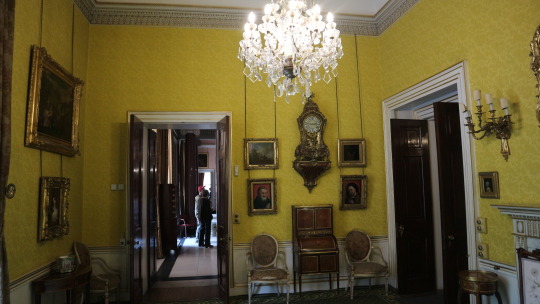


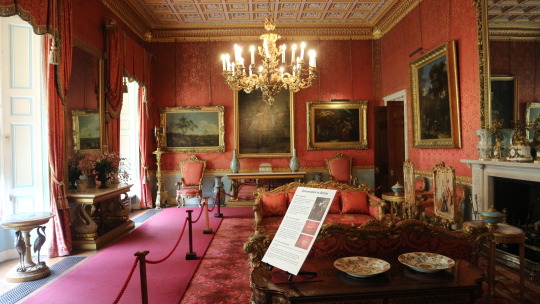
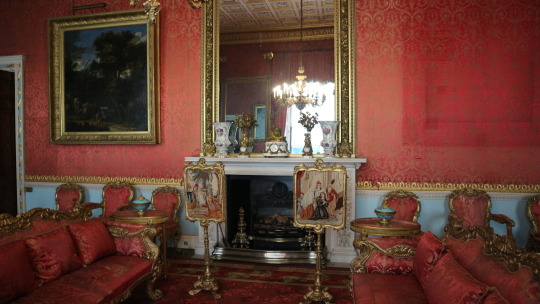


"Rather deathe than false of Faythe”
Tatton Park came into the Egerton family in 1598; Sir Thomas Egerton, one of the rising Protestant official class who had benefited from the dissolution of the monasteries by Henry VIII in 1536 and the rise of the administrative state, bought the land with money from his career as Lord Chancellor of England.
(Although the son of a nobleman, and obviously a talented man, Thomas had been born out of wedlock and did not inherit wealth; his gifts alone would not have been enough to get him to the top if he’d lived a hundred years before. He was able to get where he did because of his education at Oxford University, from being a Member of Parliament, and the new official careers open to men like him in the Tudor age).
Thomas, the first of a centuries-long line of Egertons in public life, extended a house which already stood here, though it’;s unknown who exactly built it. The Old Hall is still around, though it was not lived in for long because John Egerton (1679-1724), great-great-grandson of Thomas, had a new house built in 1716.
Little remains of this house, as between 1780 and 1813 lords Samuel Egerton (1711-80), William Egerton (1746-1806) and Wilbraham Egerton (1781-1856) employed Samuel Wyatt and his nephew, Lewis, to build a new house on the same site. (These Egertons were all, in an Egerton tradition, local leaders and Members of Parliament)
You can see that the Wyatts did a fine job; it’s still here, and I went inside for the first time in June 2022 (only the downstairs was open, though I hope to see the upstairs very soon).
Please see here, here and here for the garden, which was remade at the same time; I go into the garden’s history and more about the family there.
The Egertons, though rooted in Cheshire soil, profited from the new industries; they owned a quarry in nearby Runcorn, from which much of the sandstone to build the mansion was quarried.
The Egertons gained when, after the railway came to Knutsford, the nearby town most of which they owned, in 1863. They also owned land in the boming industrial city of Manchester, which was put to use as workers’ houses whose rent came here, they owned land around the Manchester Ship Canal and Wilbraham Egerton (1832-1909; grandson of the above Wlbraham Egerton) was chairman of the Manchester Ship Canal Company.
The highest point for Tatton came around this time, in 1887, when the second Wilbraham Egerton (also a Member of Parliament, like his father William) entertained the Prince and Princess of Wales, who in 1901 became King Edward VII and Queen Alexandra.
In 1906, Country Life magazine said that “there has been a park here since time immemorial” and noted that the second Wilbraham Egerton opened the garden to visitors on Saturday afternoons; the hall’s links to Knutsford are longer than the National Trust ownership which began in 1958 after Maurice (1874-1958), fourth and last Baron Egerton, left it to the nation in his will.
Maurice, who is remembered in a permanent exhibition here, was a fascinating man, a pioneer of motorcars, photography and flying, who fought in WW1 in the navy, but, never marrying or finding Cheshire to be truly his home, spent much of his time in Kenya, where he is fondly remembered for being better than most of the white settlers in Kenya, founding (1938-54) a castle and (1939) what is still Egerton University.
Kenya, though it still reveres Maurice, became an independent state in 1963, showing (as does the sale to the NT) that his world had gone out, the first intimations of which came when Maurice’s father (Wilbraham’s brother), Alan, who (following so many of his forefathers) had served as the local Member of Parliament since 1885, was voted out in 1906. No Egerton held public office after that.
But as you can see the house stands with (2,3) entrance hall, (4) card room, (5) library (which holds Fox’s Book of Martyrs and many other Prod books- the Egertons obviously remembered what they owed their start in life to!), (6) music room, (7,8) drawing room, (9) dining room, (10) yellow drawing room (used as a sitting room by the family, unlike the more formal drawing room). (I look forward to sharing the servants’ quarters and work stations in a later post).
A big Indian wedding was being held when I went, therefore the upstairs could not be seen, though I will come back to see it and share my findings with you soon. It shows that the Egerton traditions of grandeur and openness are still being followed and discovered by anyone lucky enough to find their way here.
4 notes
·
View notes
Text
Africa's Economic Renaissance
By Ollus Ndomu
In the heart of Africa beats a pulse of resilience and growth, defying global uncertainties to forge a path towards prosperity. As the world grapples with economic challenges, Africa emerges as a beacon of hope, with its vibrant economies poised to lead the way forward.
The Rise of Africa: A Story of Determination
Africa's economic resurgence is not a mere coincidence but a testament to the continent's resilience and determination. Despite facing numerous challenges, from political instability to economic volatility, African nations have consistently pushed forward, driven by a collective vision of progress and prosperity.
In recent years, Africa has witnessed remarkable economic growth, outpacing global averages and attracting attention from investors worldwide. From the bustling streets of Lagos to the sprawling savannahs of Kenya, signs of progress are everywhere, fuelled by strategic investments, policy reforms, and a growing entrepreneurial spirit.
The African Development Bank Group: Leading the Charge
At the forefront of Africa's economic transformation stands the African Development Bank Group (AfDB), a driving force behind the continent's growth agenda. With a mandate to promote sustainable development and economic integration, the AfDB plays a pivotal role in shaping Africa's economic landscape.
Through its various initiatives and programs, the AfDB works tirelessly to support African countries in their quest for development. From infrastructure projects to financial assistance programs, the AfDB provides crucial support to governments and businesses across the continent, catalyzing growth and fostering prosperity.
A Continent of Opportunity: Africa's Economic Outlook
According to the latest report from the African Development Bank Group, Africa's economic outlook is brighter than ever, with eleven African countries projected to be among the world's fastest-growing economies in 2024. This optimistic forecast reflects Africa's resilience in the face of global challenges and highlights the continent's potential for growth and development.
Overall, real gross domestic product (GDP) growth for the continent is expected to average 3.8% and 4.2% in 2024 and 2025, respectively, surpassing projected global averages. This robust growth underscores Africa's position as the world's second-fastest-growing region, trailing only behind Asia.
Africa's Top-Performing Economies
Among the top-performing African economies are Niger, Senegal, Libya, Rwanda, Cote d'Ivoire, Ethiopia, Benin, Djibouti, Tanzania, Togo, and Uganda. These countries are projected to experience strong economic performance, with growth rates exceeding 6% in many cases.
Niger leads the pack with a staggering growth rate of 11.2%, followed closely by Senegal at 8.2% and Libya at 7.9%. These impressive growth figures reflect the resilience and dynamism of Africa's economies, driven by strategic investments, economic diversification, and increased consumption.
Challenges and Opportunities
Despite the promising outlook, Africa's economic journey is not without challenges. Rising geopolitical tensions, regional conflicts, and political instability pose significant risks to the continent's growth trajectory. Additionally, global economic uncertainties and inflationary pressures threaten to disrupt trade and investment flows, further complicating Africa's economic landscape.
To navigate these challenges successfully, African countries must adopt a multi-faceted approach that includes larger pools of financing, policy reforms, and strategic investments. By bolstering resilience and fostering inclusive growth, Africa can overcome obstacles and realize its full economic potential.
The Role of Sustainable Development: Building a Brighter Future
Central to Africa's economic renaissance is a commitment to sustainable development and inclusive growth. By prioritizing environmental sustainability, social equity, and economic prosperity, African nations can build a brighter future for generations to come.
Through initiatives like the African Development Bank Group's Macroeconomic Performance and Outlook (MEO) report, African countries gain valuable insights and recommendations to guide their development efforts. By leveraging these resources and embracing a shared vision of progress, Africa can overcome challenges and build a prosperous future for all.
Conclusion: Africa's Time to Shine
As Africa embarks on its journey towards economic prosperity, the continent stands at a crossroads, with boundless opportunities awaiting. With bold leadership, strategic investments, and a commitment to sustainable development, Africa is poised to realize its full potential and emerge as a global economic powerhouse.
As the African Development Bank Group leads the charge, Africa's destiny lies in its hands. By harnessing the continent's vast resources and talent, African nations can overcome challenges, seize opportunities, and write a new chapter in Africa's storied history. With determination and perseverance, Africa's time to shine has arrived.


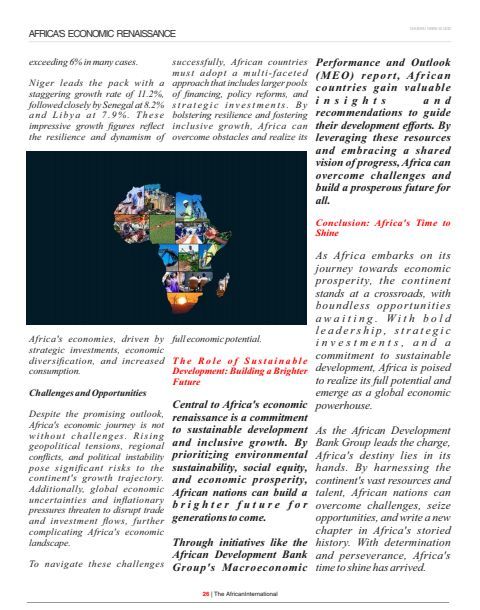
#africa#panafrican#my writing#afrofuturism#african development bank#african politics#politics#pan africanism#economics#magazine#artists on tumblr#african writers#fashion#writers
1 note
·
View note
Text

REVIEW
Black River by Matthew Spencer
Rose Riley #1
Riveting read that captured my attention immediately and didn’t let me go till the last page!
What I liked:
* Detective Sergeant Rose Riley: committed, driven, competent, strong, determined, believes in her training and her instincts, team player, insomniac, a woman I am curious about and hope to learn more about
* Steve O’Neill: homicide detective, top person in the department, alpha, intense, driven, divorced, great leader, able to take power naps at the drop of a hat, team leader who knows the strengths of the people he works with, would like to know more about him
* Adam Bowman: newspaper reporter, works night shift, alcohol dependent, had a difficult childhood, capable, alone but enjoys being with others, another character I am curious about – almost liked him best of the characters met in this book
* Dr. Wayne Farquhar: psychiatrist working with the homicide team, knows his business, insightful, not always 100% correct…maybe
* Priya Patel: younger member of the team, bright, motivated, eager, strengths that will be good in the future
* The plot, pacing, setting, and writing
* The police procedural aspects and how the team worked to uncover whether or not the two murder sites were related and who the killer(s) were
* That I felt a part of the story
* The twists and turns and tidbits that were shared
* The part the river played in the story
* That there will be another book in this series
What I didn’t like:
* Who and what I was meant not to like
* Thinking about those who commit crimes and murder, the nature vs nurture aspect of serial killers, and also about the loss and pain and grief experienced by those left behind when someone is murdered
Did I enjoy this book? Yes
Would I read more in this series? Yes
Thank you to NetGalley and Thomas & Mercer for the ARC – This is my honest review
4-5 Stars
BLURB
A long, burning summer in Sydney. A young woman found murdered in the deserted grounds of an elite boarding school. A serial killer preying on victims along the banks of the Parramatta River. A city on edge.
Adam Bowman, a battling journalist who grew up as the son of a teacher at Prince Albert College, might be the only person who can uncover the links between the school murder and the 'Blue Moon Killer'. But he will have to go into the darkest places of his childhood to piece together the clues. Detective Sergeant Rose Riley, meanwhile, is part of the taskforce desperately trying to find the killer before he strikes again. Adam Bowman's excavation of his past might turn out to be Rose's biggest trump card or it may bring the whole investigation crashing down, and put her own life in danger.

AUTHOR BIO
Matthew Spencer was a journalist at The Australian for twenty years, with long stints running the Foreign News desk and as Opinion Editor. He has written for newspapers and magazines in Uganda and Kenya and been published in The Australian Financial Review and The Sydney Morning Herald.
Matthew has an Honours degree in English Literature from the University of Sydney. Black River is his first novel.
He was born in Parramatta. The son of teachers, he lived with his sister Kate on the 320-acre campus of a boys’ boarding school. Long summers on the largely deserted property while exploring the remnant bush with its tributary of the Parramatta River inspired the book.
Matthew lives in Sydney with his wife, Ritu Gupta, and their three children.
0 notes
Text
Tokenizing music royalties as NFTs could help the next Taylor Swift
Since 2021, pop superstar Taylor Swift has been rerecording and releasing her entire back catalogue of albums in an effort to break away from her previous record label and gain greater control over her art.
The fact she has to go through such a painstaking, expensive process just to recover what most would consider rightfully hers highlights how the music industry can be a complicated, confusing place for young artists. It has a well-deserved reputation for being a space where enthusiastic musicians often unknowingly enter into unfavourable or exploitative record contracts.
“I would say maybe 10% of musicians have a good understanding, 1% of musicians have a great understanding, and 0.1% of musicians have an amazing understanding” of the legal and financial structure behind the music industry, Justin Blau tells Magazine. Also known as 3lau, Blau is a popular DJ and the founder of Royal, one of a handful of companies working to bridge the divide between the traditional music industry and blockchain.
Web3 or blockchain is often hyped up as the “Promised Land” for musicians, where the music industry will be democratized and decentralized, and where musicians will earn a larger slice of the profit pie by connecting directly with fans through NFTs.
One rising use case for “music NFTs” is tokenizing a song’s royalties, allowing fans to earn a percentage of the revenue generated by their favourite artists’ music.
But music copyright law and royalty collection are highly complicated, and very much off-chain. So, where exactly does blockchain fit in, and what do artists and fans gain from its introduction?
A complicated starting point
To start with the very basics, each piece of recorded music has two copyrights associated with it: One represents the recording itself, while the other represents the underlying composition — the written lyrics and music.
Depending on how many people and companies are involved in writing and releasing a song, any one track can have multiple rights holders. Musicians who release music through record labels are often required to sign over the master recording rights to the label.
How a song’s copyrights generate multiple royalty streams. (Royal)
Each copyright also generates its own associated royalties based on whether the song was played on the radio, listened to on Spotify, featured in a movie, etc. On top of that, different organizations are responsible for collecting each type of royalty.
With all that, it’s easy to see why the average artist may not fully grasp the business side of the music industry when entering into a recording contract that benefits their label more than them.
Taylor Swift spends her 33rd birthday in the studio. (Instagram)
“Very few people really begin understanding the business of music and how it works, let alone the legal part of it,” Renata Lowenbraun, an attorney and CEO of Infanity — a Web3 platform for independent music artists and their communities — tells Magazine.
“The more informed you are as a recording artist or as a songwriter, the better off you are.”
Read also
Features
Banking The Unbanked? How I Taught A Total Stranger In Kenya About Bitcoin
Features
Bitcoin 2022 — Will the real maximalists please stand up?
Putting royalties on the blockchain
There are three main companies working on tokenizing traditional music royalty streams — Blau’s Royal, Anotherblock and Bolero — and they all follow the same basic premise.
A song’s rights holders divest a certain percentage of their royalties, and those royalty rights are fractionalized as NFTs. Tokenholders receive regular payouts to their crypto wallets in USDC in proportion to their share of the rights. If they wish to sell their NFTs, they can do so on the company’s website or secondary markets like OpenSea.
Justin Blau in front of a massive crowd at Electric Daisy Carnival. (Rukes/Instagram)
The core focus of Royal is streaming, and the platform has already worked with several high-profile musicians, including Nas and The Chainsmokers. Blau tells Magazine that streaming is “where most of the income comes from,” and that since fans can directly impact how often a song is streamed, “it makes the most sense to give fans the ownership in something that they actually can affect the success of.”
Royal’s NFTs live on Polygon and can be stored either in a custodial wallet managed by Royal or self-custodied using a wallet like MetaMask.
Owning a piece “Rare” by Nas also provides access to the secret menu for chicken spot Sweet Chick. (Royal)
Anotherblock — which has worked with musicians like The Weeknd and R3hab — also focuses on streaming royalties and uses Ethereum. Investors can buy the NFTs with ETH using a self-custodial wallet or through the third-party wallet service Paper.
With all three platforms, the original rights holders retain ownership of the copyright itself — all they give up is a share of the royalties. Anotherblock CEO Filip Strömsten tells Magazine, “We think that the creators are the ones that have made the track, and they should be able to decide where their music is and how their music is being listened to.”
Rapper Snoop Dogg bought his old record label and now owns his masters. (Instagram)
Bolero is a more recent entrant to the business of putting royalties on the blockchain, launching the Polygon-based “Song Shares” in February. It has worked with musicians like Agoria and Yemi Alade.
While Royal and Anotherblock fractionalize just one of the royalty streams generated by a song’s master recording, Bolero focuses on the master recording itself and its underlying IP.
As a result, NFT holders are entitled to a percentage of the royalties generated by multiple exploitations of the master recording, including physical sales, digital sales and sync placements (when a song is used in a movie, TV show, etc) in addition to streams.
“This is what we are trying to tackle here,” William Bailey, Bolero’s co-founder and CEO, tells Magazine.
“We are taking IP, we are fractionalizing, and thanks to this, we are able to offer multiple revenue sources.”
Keeping the artists at the center
Many builders in the Web3 music space are motivated by their own negative experiences in the business.
Blau, who continues to release music and tour, says he wants to help musicians better understand the industry, know the true value of their music, and ultimately, retain more ownership. “Everyone’s heard the saying ‘artists don’t get paid for music,’” he says. “That’s true a lot of the time. But the statement ‘music doesn’t make money’ is not true.”
Justin Blau in the studio with fellow DJ Steve Aoki. (Twitter)
Anotherblock’s Strömsten is also a musician, and his negative experience signing a recording contract at 18 later inspired him to co-found the company so that artists could sell their catalogs directly to fans instead of giving them away for virtually free to record labels.
“We want to emotionally and financially connect the consumers of music with the creators of music,” he states. “If you actually own something, then you are probably willing to pay more, and you’re probably willing to support that creator more.”
With a traditional recording contract, the label acts as a bank, giving artists cash advances and fronting the money to record their albums. But there’s a massive catch: The label wants that money back, and the artist is technically in debt until the label recoups its investment.
For Bolero’s Bailey, selling a part of one’s music catalog directly to fans is a way to get money upfront but not be indebted to a record label. “Instead of taking an advance that will be really difficult to recoup, maybe you can simply share or sell a little piece of it.” He adds:
“Thanks to Web3, I can access a liquid market to trade my IP without losing creative control.”
Agoria divested 100% of his applicable royalties to collectors for his single “Agorians.” (Bolero)
And when collectors decide to sell their tokens on secondary markets, artists can continue to profit from each sale. So while artists give up some of their future music industry royalties, they gain access to a different set of blockchain royalties generated from the secondary sales of their NFTs — assuming traders sell them on markets with this feature enabled.
Read also
Features
DeFi abandons Ponzi farms for ‘real yield’
Features
Reformed ‘altcoin slayer’ Eric Wall on shitposting and scaling Ethereum
What’s in it for the fans?
So, what do fans gain from musicians tokenizing their royalties? The most obvious answer is that they can more directly support their favorite artists and get some “skin in the game.” The better a song performs, the more money fans can potentially make.
Purchasing music catalogs has historically been limited to a select few major institutional funds and record labels with deep pockets. But through fractionalization, “the average Joe can actually access music rights,” argues Strömsten.
Estimated yearly returns for Offset and Metro Boomin’s 2017 song “Ric Flair Drip.” (Anotherblock)
Music catalogs for major artists are generally recognized as stable assets with reliable, lucrative returns for investors. Strömsten reports that Anotherblock’s recent royalty payouts saw “approximately 9% annualized dividend yields, which is much better than the stock market is performing, especially now.”
“You buy a catalog, and if the economics are right, you’re going to have royalties coming in in the future,” adds Infanity’s Lowenbraun. She also points to the collectible nature of the NFTs themselves — fans have a blockchain-based memento proving they are long-time supporters of an artist.
Agoria poses with noted NFT collector Gmoney. (Twitter)
“Think about the bragging rights you can have, right? ‘Hey, I was an earlier supporter. I was into this in this person before anybody, before he blew up.’ But you can really prove that now.”
This aspect has also been embraced by platforms such as Sound, which recently raised $20 million in a Series A funding round that included the participation of rapper and crypto connoisseur Snoop Dogg. Projects like Sound and Infanity let artists mint limited-edition music NFTs tied to new music releases, allowing fans to directly support them in exchange for perks like exclusive meet-and-greets and VIP concert tickets.
Bolero’s Song Shares include a clause where artists can buy back the IP they divested to collectors at the current secondary market price. If the tokens have increased in value, fans make a profit.
For Bailey, this ensures fans are properly compensated in the event an artist gains greater success and wants to pursue other lucrative deals.
“The fans and the investors who are actually acquiring these pieces of catalogs, they are not lost in the process.”
Blockchain, meet the real world
For all of the promises of Web3, the traditional music industry remains very much off-chain. As Royal’s Blau puts it, “It’s impossible to expect the world to just flip a switch and move everything on the blockchain.” This effectively means that there is only partial decentralization, with these platforms acting as trusted intermediaries, collecting revenue from centralized off-chain sources before moving it on-chain.
This irony isn’t lost on Strömsten, who tells Magazine: “I would say that is probably the biggest challenge. If you want to have a decentralized music industry to begin with, then anyone who listens to music has to do that on-chain, right? So, the royalties have to start on-chain in order for it to be completely trustless and completely decentralized in that way. And it’s pretty improbable, in my view, that in the short term that is going to happen.”
Rapper Mims tokenized part of his royalties for his 2006 No. 1 single “This Is Why I’m Hot.” (Anotherblock)
Then there is the regulatory and legal ambiguity around crypto and NFTs, especially in the United States, which is the largest market for recorded music and home to the “Big Three” major record labels — Universal Music Group, Sony Music Entertainment and Warner Music Group. (UMG is legally headquartered in the Netherlands but maintains its operational headquarters in California). For example, the question of whether NFTs can be considered securities in the U.S. is still up in the air.
“The law, in general, always lags behind new technology because new technology just moves a lot quicker,” attorney Lowenbraun states. “Over time, the courts will slowly get used to this new technology and come up with ways of crafting the law, or rather to use existing principles to figure out what the heck things mean in Web3. I have full confidence in that.”
She adds that while linking royalties to NFTs is an exciting idea, builders must tread carefully. “For anybody working in it now, it just means you’ve got to make some logical best guesstimates based on where existing law is now on where it should be going.”
“It’s still a little iffy depending on how you offer what you’re offering.”
The future is on-chain — potentially
The Promised Land may still be some way — with no easy path to get there. It would require music rights to be stored on-chain and royalties to be paid on-chain, both of which are technologically possible but don’t seem to be an immediate priority of anyone in the traditional industry.
Many traditional music industry players have little interest in shaking up the current model, as its complex and confusing nature ultimately benefits them and their ability to make money at the expense of artists. As Bailey says, “They are making their bread and butter because it is complicated, you know?”
Outkast rapper Big Boi fractionalized part of his 2017 song “Kill Jill.” (Royal)
But true believers still think we’ll make it. Ljungberg believes that “in a couple of years, it’s not unlikely, in my view at least, that Spotify will pay out royalties directly on-chain and get distributed automatically to all the parties that are involved since that’s a lot more efficient way of doing it.”
According to Blau, it’s just a matter of patience:
“People don’t understand it yet. Any nascent technology just takes time to reduce friction.”
Subscribe
The most engaging reads in blockchain. Delivered once a
week.
Jonathan DeYoung
Jonathan DeYoung is the senior copy editor at Cointelegraph. He is interested in how decentralized technologies can strengthen communities, and the ways blockchain can empower independent artists and creators. In his free time, Jonathan raps and produces under the name “MADic.”
Follow the author @maddopemadic
Source link
Read the full article
0 notes
Photo

Kenya Summer Moore Daly (born January 24, 1971) is an actress, model, producer, author, television personality, and entrepreneur. She co-starred in The Real Housewives of Atlanta and was a member of the cast of The Celebrity Apprentice 7. She rose to prominence after winning the Miss USA contest which led her to compete in that year's Miss Universe pageant landing her among the top six. She has produced several film projects, had a book published, and starred in her exercise video. She is known for her involvement in entrepreneurial ventures and is the founder of the hair care brand, Moore Hair. She was born in Detroit to Patricia Moore and Ronald Grant and was raised by her paternal grandmother Doris Grant and aunt. She graduated from Cass Technical High School. She attended Wayne State University, where she majored in psychology and minored in communication. She had parts in television programs including The Fresh Prince of Bel-Air, Meet The Browns, Homeboys in Outer Space, Sparks, Smart Guy, Video Soul, Living Single, Damon, In the House, The Jamie Foxx Show, The Parent 'Hood, Martin, The Steve Harvey Show, Nubian Goddess, Men, Women & Dogs, The Parkers, Under One Roof, and Girlfriends. She has appeared on the covers of Glamour, Seventeen, Ebony, and Essence magazines and can be seen in the music videos for Jermaine Dupri's "Money Ain't a Thang", Nas's "Street Dreams", Shai's "I Don't Wanna Be Alone", and Tupac's "Temptations". She has appeared in several films: Waiting to Exhale, Senseless, Trois, Deliver Us from Eva, Brothers in Arms, Cloud 9, I Know Who Killed Me, and Trapped: Haitian Nights. She married businessman and restaurant owner Marc Daly (2017-2021). #africanhistory365 #africanexcellence https://www.instagram.com/p/CnzaFpwrkC7/?igshid=NGJjMDIxMWI=
1 note
·
View note
Text
AAR Insurance Feted as the Best Digital Insurance Company in Kenya.
AAR Insurance Feted as the Best Digital Insurance Company in Kenya.
AAR Insurance Kenya has been recognized as an insurance trendsetter and a top innovator in Kenya for its Mobile application that has digitized access to its products and services.
The insurer was awarded the “Most Innovative Insurance Mobile App Kenya 2022″ & “Best New Fully Digital Insurance Company Kenya 2022” by the Global Business Magazine Awards.
Commenting on the awards, AAR Insurance…

View On WordPress
0 notes
Text
AAR Insurance Feted as the Best Digital Insurance Company in Kenya.
AAR Insurance Feted as the Best Digital Insurance Company in Kenya.
AAR Insurance Kenya has been recognized as an insurance trendsetter and a top innovator in Kenya for its Mobile application that has digitized access to its products and services.
The insurer was awarded the “Most Innovative Insurance Mobile App Kenya 2022″ & “Best New Fully Digital Insurance Company Kenya 2022” by the Global Business Magazine Awards.
Commenting on the awards, AAR Insurance…
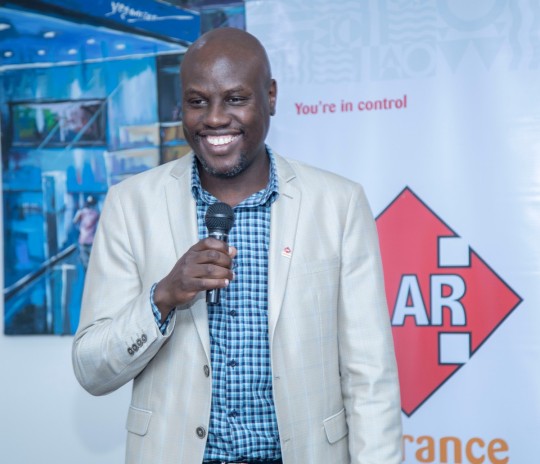
View On WordPress
0 notes
Text
Best African countries for entrepreneurs in 2022: Top 10 rankings
The Entrepreneurship Index evaluates a total of 100 economies based on a wide range of factors to create an overall ��best countries for entrepreneurship” index, including innovation, competitiveness, infrastructure, labour skills, access to capital, and openness for business.
According to the report, South Africa tops the local ranking for the best African countries to be an entrepreneur. With a highly-skilled workforce, competitiveness and openness for business, the country has the second-largest economy in Africa, after Nigeria, and is also unarguably the most industrialised nation in sub-Saharan Africa.
Here are the top 10 most entrepreneurial countries in Africa according to CEOWORLD magazine Entrepreneurship Index, 2021.
South Africa
Rwanda
Morocco
Kenya
Nigeria
Tunisia
Ghana
Botswana
Cameroon
Egypt
https://ift.tt/1AGVEjb
https://ift.tt/uAFdlr3
#Saas#softwaresystems#productdevelopment#software#practice#optimization#accuracy#efficiency#productivity#softwareprojects#cracksthecode
0 notes
Text
Paws And Pixels: Pet Tech Innovations For Enhanced Well-Being - H&S Pets Galore
Exploring Gadgets & Apps That Make Your Furry Friend’s Life Purrfect
In today’s digital age, technology isn’t just for humans—it’s for our beloved pets too. From smart collars to interactive toys, a plethora of gadgets and apps are revolutionizing how we care for our furry companions. These innovations not only enhance their well-being but also provide us with peace of mind and deeper insights…

View On WordPress
#activity trackers#adopt a cat#adopt a pet#adopt a pet in kenya#automated feeders#automatic litter boxes#Cat#Cat Lovers#cats#cats & dogs#DNA testing kits#Dogs#Dr. Desmond#Dr. Desmond Tutu#GPS trackers#H&S Magazine#H&S Magazine Kenya#H&S Pets galore#Having a Pet#interactive toys#Kenya&039;s top Magazine#kittens for adoption#KSPCA#love pets#Magazine Kenya#pet adoption Kenya#pet cameras#pet health apps#Pet Lovers#pet tech
0 notes
Link
About the job R00170017 Join Ecolab’s industry leading Healthcare team as Business Development Manager in Kenya and see why Selling Power magazine has consistently ranked Ecolab as a top company …
0 notes
Link
0 notes
Photo
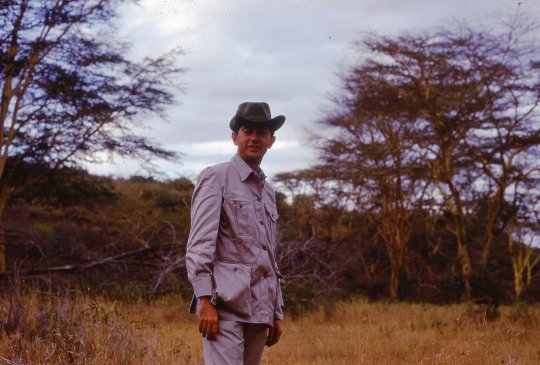
A cool photo of the late great Frank Jacobs, on the MAD trip to Kenya in 1969. Jacobs passed away earlier this month, but was probably the greatest writer the magazine has ever known. Bored by his work in a public relations firm in 1957, Jacobs found a copy of Mad and thought "I can do this."
His first submission to the magazine, "Why I Left the Army and Became a Civilian," resulted in an immediate sale and a request for more material. It was one of five Jacobs pieces to appear in issue #33 (June 1957), marking a prodigious debut for the Mad contributor. His byline subsequently appeared in more than 300 issues of the magazine, second only to Dick DeBartolo (among Mad writers who did not also illustrate their own work). Jacobs had more than 575 credits for the magazine, more than any other writer and second only to writer/artist Al Jaffee. At his peak, Jacobs was writing a fifth of the magazine's content. "My top year, I sold 60 pages... so you get an idea of the roll I was on," Jacobs told an interviewer. 165 separate issues of Mad include multiple articles written by Jacobs.
83 notes
·
View notes
Text
🎉1k+ Followers Language Resources Masterpost🎉
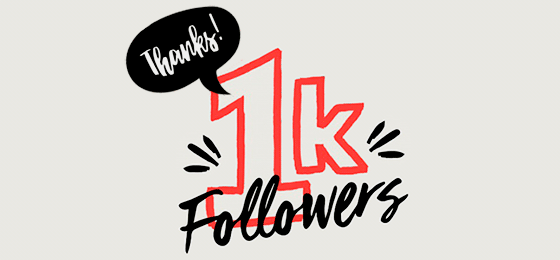
First of all, I want to thank you all for following this tiny blog! Without you, anything of what’ve done here wouldn’t have been possible. If I’ve ever been of help for any of you, I’m very much glad and I hope I can continue helping you for a long time more!
[DISCLAIMER: My current main languages are Japanese and Portuguese right now, so I have more resources for those. I’ll try to maintain this post updated whenever I find more for other languages]
Uploaded at: 24/December/2020
* sites in the language they’re listed in.
JAPANESE
Nihongo Ichiban - List of all particles. The site offers lessons.
Ehonavi* - Has interviews and articles. No kana on top of kanji.
Matcha Easy* - Has articles, most of them from the Matcha brand of icecreams. It’s written in easy Japanese with kana on top of kanji.
Matcha* - Same as above, but written in advanced Japanese.
Yahoo Kids* - Educational site for children that has articles, lessons and games. Written in easy Japanese, but not all kanji have kana.
NHK Web Easy* - Japan official news in easy Japanese. Has kana on top of kanji and audio version for the article.
Asagaku* - Online newspaper. No kana on top of kanji.
Japanese IO - One of the best sites for reading practice in Japanese. Has reading material for all levels and their interface allows to see the meaning of a word by clicking on it. You need an account and there’s a paid version, but the free one offers almost everything you may need.
Locari* - Site for fashion, food and beauty articles. No kana on top of kanji.
Watanoc* - Online magazine in easy Japanese.
Renshuu - Site for practising and learning kanji. It tracks your learning as long as you use the site and has several ways to learn kanji, it also has some games. You need to create an account.
Jtest4you - Has tests for al JLPT levels, grammar and vocab lists for those levels and some resources.
TV Japan Live - Watch Japanese TV live!
Traditional Japanese Children’s Stories - Site that offers a list of stories in easy Japanese, written in kana and with English translation.
JLPT Study Page - Recompilation of study material for JLPT levels from N5 to N2. IT’S NOT OFFICIAL.
Ameba* - Site for popular articles and news. It’s in advanced Japanese and no kana on top of kanji.
Rawdevart - Read raw manga in Japanese and Chinese.
Love Heaven - More raw manga.
Wasabi - Paid lessons, but has some that are free.
Tofugu - Japanese learning site. Not only has grammar lessons, but also cultural articles and offers new resources every month or so.
Japanese with Anime - Lessons that are inspired in the Japanese and cultural marks we see in anime.
Irodori - Free textbooks for beginners.
Japanese Lesson - Lessons for beginners.
JGram - Japanese grammar database.
Fontbear* - Japanese fonts! As far as I can remember, some are free, some are not.
Coliss* - More fonts!
Nishinippon* - News and articles in easy Japanese. No kana on top of kanji.
IGN Japan* - Videogame and pop culture articles. No kana on top of kanji.
Entabe* - Food articles. No kana on top of kanji.
KanjiTomo - Software that recognises kanji in images.
Wanikani - Site to learn kanji and vocabulary. You need and account and you need to pay to get access to all the content.
Try it* - Japanese Khan Academy. It offers lessons for subjects Japanese children have in school, like math, science or English!
NHK for School* - More school lessons.
Book Share ZIP - Download raw magazines and light novels.
Kabegoe* - Travel articles. No kana on top of kanji.
Travel Lovers* - More travel articles.
Marshall’s site - A very complete site that offers Japanese lessons and quizzes for all levels. You need an account.
Maggie Sensei - Great blog that gives grammar lessons with tons of examples.
Jmagazine scans archives - Download raw Japanese magazines.
Hukumusume* - Site for children, it has stories for 1st to 6th grade.
Animelon - Watch anime with Japanese subtitles. The interesting part is that you can look up the meaning of an unknown word by clicking the subtitle.
Youtubers I Watch for Listening Practice - Check out my post! I still have to update it and do another ones for more languages.
[PARA HISPANOHABLANTES]
Libros de texto gratis Este blog tiene un montón de libros de texto de japonés completamente descargables en formato PDF.
Descarga libro de texto Tobira.
Mexico Shimbun - Revista de noticias mexicanas en japonés. La página está caída, pero su sitio en FB sigue en pie, aunque no tan activa.
NHK en Español - Lecciones básicas.
Kira Teachings - Lecciones básicas y artículos.
Guía sobre la gramática japonesa - Sitio muy completo con explicaciones de gramática.
Japolatino - Más lecciones de gramática!
Portugués
R7 VIRTZ* - Good news.
Easy Portuguese - Basic to intermediate lessons.
Aulas de Português* - Japanesse ortography lessons for fanfiction writers!
Público* - News.
Learning Portuguese - Lessons site from basic to intermediate.
Maiores e Melhores* - Tops and tops.
Cultura Genial* - Pop culture articles, tops and other interesting trendy stuff.
Revista Bula* - Online magazine, most articles are about pop culture.
Yahoo Notícias* - Brazilian news.
iG* - More Brazilian news.
IGN Portugal* - Videogame, movies, music and pop culture articles.
Máxima* - Online fashion and beauty magazine.
Activa* - Fashion and beauty blog.
Ímpar Público* -Lifestyle articles.
Elle Portugal* - Online fashion and beauty magazine.
Vogue Portugal* - Online fashion and beauty magazine.
[PARA HISPANOHABLANTES]
Bab.la Diccionario - Ofrece distintas combinaciones de idiomas.
Bab.la Conjugador - Conjuga verbos, se tiene que escribir en portugués y aparecen todas sus conjugaciones en todos los tiempos.
Estudiemos.org - 18 lecciones con mucho vocabulario.
Portuguesweb.com - Tiene bastantes lecciones.
GERMAN
Wolkenkratzer - Online textbook.
Essential German - Another textbook that is very complete.
FSI German Basic Course - Free textbook. It’s old, but very complete.
A Foundation Course in Reading German - Free online textbook by the University of Wisconsin-Madison.
Deutsch im Blick - It’s supposedly an online textbook, but seems more like an archive. Has exercises, videos, audios and lists.
Learn German Online (ielanguages.com) - Offers lessons separated by subject, i.e, weather, seasons, transportation, etc.
German Language Guide - More lessons!
Sesamstrasse - Sesame Street in German!
German Lessons (DW) - Lessons offered by a popular German broadcaster.
SWAHILI
Learn Swahili (ilanguages.org) - Grammar and vocabulary for absolute beginners.
Learn Swahili (mylanguages.org) - It’s really similar like the one above, but it’s more complete.
Learn Swahili (Magical Kenya) - Basic phrases by a travelling agency at Kenya.
The Kansas University Textbook - This completely free textbook has 65 lessons.
KIKO: Kiswahili kwa Komputa - Three years worth of material by the University of Georgia.
BBC Swahili - Read news in Swahili!
FSI Swahili - Free textbook from 1950 by the government of the USA.
Swahili - English Dictionary - There aren’t that much dictionaries for African languages as far as I know.
NAHUATL
[PARA HISPANOHABLANTES]
Nawatl - Es un curso muy completo.
Matinahuatlahtolzalocan - Libro de texto de parte del gobierno.
Lectura del Nahuatl - Libro de texto gratis. Tiene vocabulario linguístico avanzado, puede ser difícil de entender.
Ejercicios para el aprendizaje de la lengua nahuatl - Libro de texto de parte del gobierno.
GREEK
Learn Greek Online - This site offers 105 lessons.
Learn to Read Greek - Free textbook by Yale.
From Zero to Greek: An Introduction to the Language for Everyone - Another free textbook, this one is smaller in volume.
New Testament Greek for Beginners - Free textbook that says for beginners, but seems pretty dense; however, it looks very complete.
[PARA HISPANOHABLANTES]
Cultura Clásica - Lecciones básicas.
Academia Latin - A diferencia de otros cursos que ofrece esta página, su curso de griego moderno es bastante básico.
Manual para Aprender Griego - Libro grátis con ejercicios.
Lengua Griega I - Libro grátis, es una guía de estudio.
LATIN
Learn Latin (mylanguages.org) - Lessons and lessons.
Learn Latin (Learn101.org) - It’s similar as the one above, but it’s not that complete.
[PARA HISPANOHABLANTES]
Academia Latin - Las lecciones son más completas que las de griego antiguo.
Linguim - Lecciones para principiantes.
RUSSIAN
Learn Russian - 100 lessons!
Master Rusian - Lessons, poadcasts and other resources.
Russian for Speakers of English - Tiny free basic guide.
Russian for Dummies - No explanation needed!
[PARA HISPANOHABLANTES]
Ruso Gratis - Es un sitio bastante simple que ofrece lecciones básicas, vocabulario y ejercicios.
ASL
MasterpostnStuff masterpost for ASL
Sign School - Free online courses from beginner to advanced. You need an account. Has app version for both iOS and Android.
Master ASL: Level One - Free book for the very beginners.
The Everything Sign Language - Free book that also teaches sign etiquette and other important factors to communicate with deaf people.
Learning to See - Free book. Rather than a book to learn ASL, it’s an analysis of acquiring it as a second language, or foreign language.
LSM (Lengua de señas mexicano)
[PARA HISPANOHABLANTES]
Manos con voz - Diccionario gratuito por Conapred.
Diccionario de Lengua de Señas Mexicana - Diccionario de parte del gobierno de CDMX.
ALL LANGUAGES
International Children’s Digital Library - Books for children in several languages.
Lingolia - Has lessons for English, Spanish, German, French and Esperanto.
Lexicity - Resources for ancient languages.
Tuna’s masterpost of resources for classic languages.
Studens docere’s masterpost of resources for Latin and Ancient Greek.
101 Languages - site that has lessons for TONS of languages.
Lovely Blue Panda’s guide to keep a journal in your target language.
Langcorrect - Write something and natives will correct it; you can also correct others in your native language.
If one of the links doesn’t work, DM me to either change it or remove it.
#lang-queen#masterpost#language masterpost#language blog#langblog#tongueblog#japanese#portuguese#ASL#Swahili#greek#latin#resources#studyblr#langblr
138 notes
·
View notes